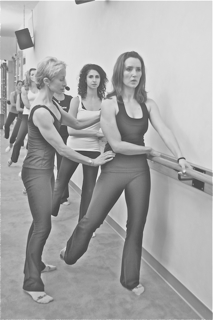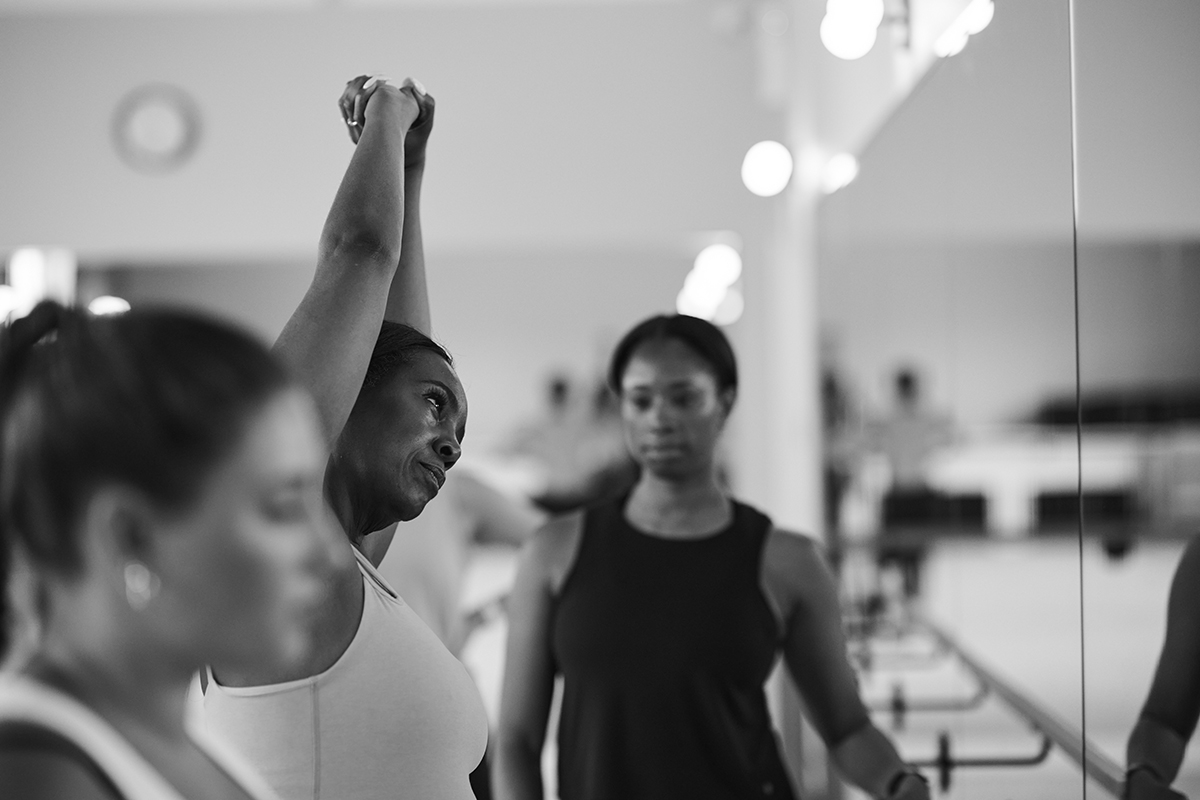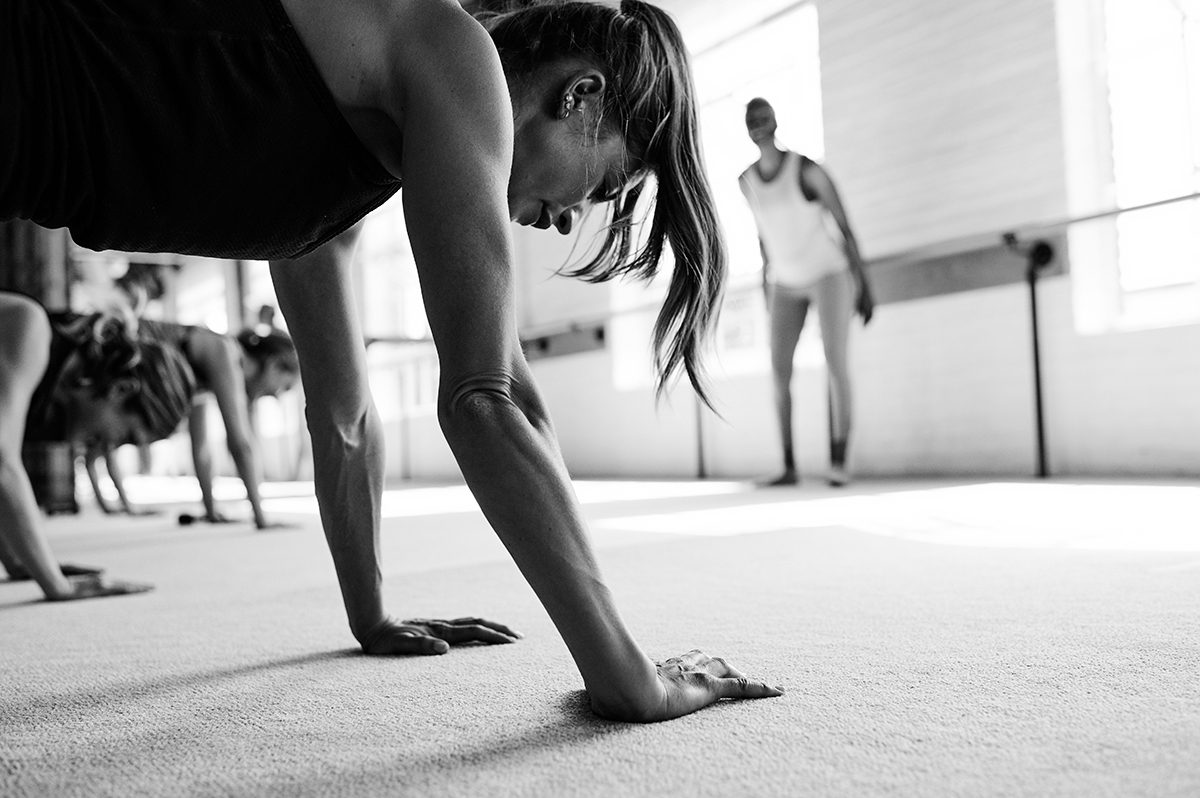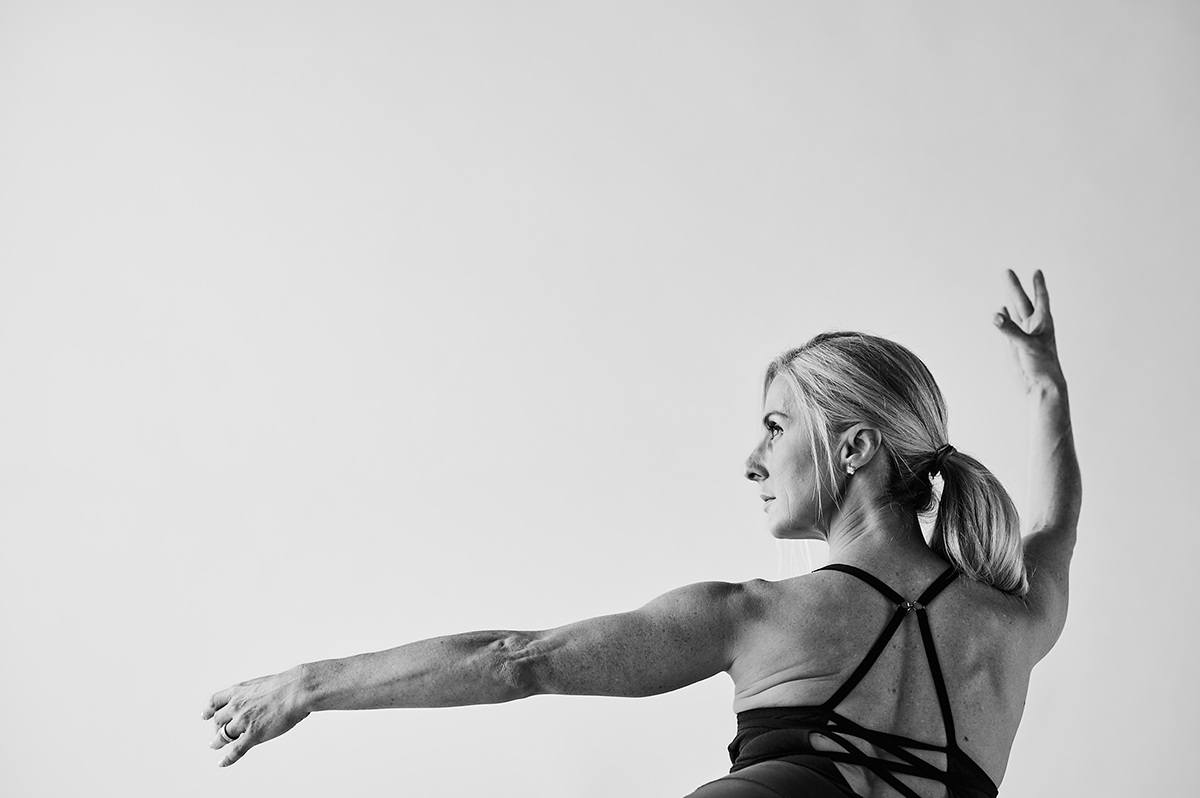New clients! For a limited time, Get 13 Classes for $78 (only $6 per class)
Hands-On Adjusting: One Secret Ingredient of Body Sculpting Exercises
Look at a class in progress and everyone seems to be working contentedly. Listen to their interior monologue, and you might get a different impression. Here is what students tell me they are sometimes actually saying to themselves: “I wonder if I’m doing this right.” “I don’t think I’m in the right position. ” “I know I’m off, so why is the teacher walking right by me?” “I wish someone would HELP me.”
This kind of thinking challenges the conventional belief that students don’t want to be touched or singled out while taking exercise classes. If you go with this idea, teachers would do best to simply show the moves and let everyone figure them out on their own. The Bar Method doesn’t buy into this view. Most students we’ve consulted on this issue tell us that they are highly motivated to do the exercises right and are frustrated when they don’t feel cared for and tended to by their teachers. As long as teachers adjust their form supportively, they tell us, they appreciate the help.
 Our students are smart to feel this way. Isometric systems like the Bar Method, unlike aerobics and boot camps, work by means of precise positioning. If students don’t get in the right positions, while they may get a good workout, they are not sculpting their bodies effectively. The better a student’s form, the faster the incredible results we are known for occur.
Our students are smart to feel this way. Isometric systems like the Bar Method, unlike aerobics and boot camps, work by means of precise positioning. If students don’t get in the right positions, while they may get a good workout, they are not sculpting their bodies effectively. The better a student’s form, the faster the incredible results we are known for occur.
Of course, we Bar Method teachers must first overcome our students’ unfamiliarity with the idea that their exercise teachers will be adjusting their form. Our first step towards learning how to “adjust” without being intrusive takes place during teacher training. Trainees practice on each other until they learn to administer “adjustments” with so much skill, confidence and positive spirit that they are able to dispel any reluctance on the part of students to receive this kind of guidance – and ultimately leave their students more relaxed and energized.
Here are a few guidelines we Bar Method teachers follow in order to make hands-on adjusting as positive an experience for our students as possible:
Touch the bony places, not the squishy places. We definitely don’t want to mistakenly put our hands on the squishier body parts. The double benefit of this tack is that the bony structures such as the hips, shoulders and the back of the ribs work better anyway when you’re straightening someone’s back or correcting their posture.
Smile (and try not to over-state the issue). When you’re making a physical adjustment, we try not to confuse the issue by talking. Students don’t want attention drawn to them, and too much conversation breaks their concentration.
Aim for improvement rather than perfection. Improvement is the goal we’re looking for. It’s fun for teachers to acknowledge – and students to be reminded – that those little steps of progress add up until they become significant change.
Watch! Some teaches develop an uncanny ability to sense their students’ needs by reading their body language and facial expressions. These gifted and caring teachers can thereby eke out the students who are most hoping for help.
All told, “hands-on adjusting” helps students get workouts sessions that feel targeted. “I like that the Bar Method is never random,” a Walnut Creek student told me last summer. “The teachers are great because they help me find every muscle from head to toe.”
Read more about sculpting your body.
Find Bar Method exercises classes near your.
Sample and buy Bar Method exercise dvds.



